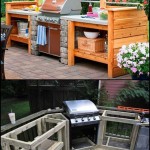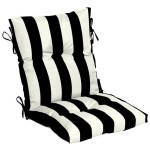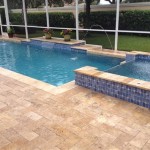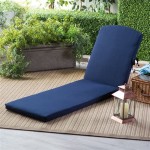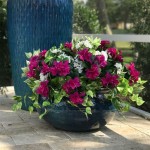Best Plants for Outdoor Living Walls
Outdoor living walls, also known as vertical gardens, are increasingly popular additions to both residential and commercial spaces. They offer an aesthetically pleasing method of bringing greenery into urban environments, improving air quality, reducing ambient noise, and even providing insulation. However, the success of an outdoor living wall hinges significantly on the selection of appropriate plant species. Factors such as climate, sunlight exposure, watering systems, and maintenance requirements must be carefully considered when choosing the best plants.
This article will explore a range of plant species suitable for outdoor living walls, categorizing them based on their characteristics and suitability for different conditions. The goal is to provide a comprehensive guide for selecting the optimal plants to create a thriving and visually appealing vertical garden.
Considerations for Plant Selection
Before delving into specific plant recommendations, it's crucial to understand the key factors influencing plant selection for outdoor living walls. These factors ensure the long-term health and vitality of the garden.
Climate: The local climate is arguably the most important determinant of plant success. Hardiness zones, average rainfall, temperature fluctuations, and winter conditions all play a role in whether a plant will thrive. Plants should be chosen that are naturally suited to the region's climate to minimize the need for extensive protection or replacement.
Sunlight Exposure: Different plants have varying light requirements. Some thrive in full sun, while others prefer partial shade or even full shade. The orientation of the wall will dictate the amount of sunlight it receives throughout the day. Carefully assess the sunlight exposure before selecting plants to ensure they receive the appropriate amount of light.
Watering System: The watering system used for the living wall will influence the types of plants that can be grown successfully. Drip irrigation systems, for example, require plants that can tolerate consistent moisture levels. Consider the efficiency and reliability of the watering system when making plant selections.
Maintenance Requirements: All living walls require some level of maintenance, including pruning, fertilizing, and pest control. Consider the time and resources available for maintenance when choosing plants. Some plants require more frequent pruning or are more susceptible to pests and diseases than others.
Weight and Size: Mature size and weight are also crucial factors. Living wall structures have weight limits. Selecting plants that won't become excessively heavy when fully grown is important. The mature size of plants also dictates spacing requirements and visual impact on the wall.
Suitable Plant Species for Outdoor Living Walls
Numerous plant species can thrive in outdoor living walls, offering a wide range of textures, colors, and forms. The following list highlights some of the most popular and reliable choices, categorized by their growth habits and suitable conditions.
Succulents and Sedums: Succulents and sedums are excellent choices for sunny, dry locations. They are drought-tolerant, require minimal maintenance, and come in a variety of colors and textures. Their water-storing capabilities make them ideal for living walls with limited watering.
Examples include:
* Sedum 'Angelina': A bright golden-yellow groundcover that provides excellent color contrast.
* Sedum 'Autumn Joy': Offers attractive pink flower heads in the fall.
* Echeveria spp.: Rosette-forming succulents that come in a variety of colors, from green to purple.
* Sempervivum spp. (Hens and Chicks): Easy-to-grow succulents that reproduce readily, filling in bare spots in the wall.
* Graptopetalum paraguayense (Ghost Plant): Pale gray, trailing succulent, drought-tolerant.
Herbs: Many culinary herbs are well-suited to living walls, providing both visual appeal and practical benefits. They prefer sunny locations and well-drained soil.
Examples include:
* Thyme (Thymus spp.): A fragrant groundcover that comes in various varieties, including creeping thyme and lemon thyme.
* Rosemary (Salvia rosmarinus): An aromatic herb with needle-like leaves that adds texture to the wall.
* Mint (Mentha spp.): A fast-growing herb that can be used as a groundcover or trailing plant. Be mindful of its spreading habit and prune regularly.
* Oregano (Origanum vulgare): A flavorful herb with small, rounded leaves.
* Chives (Allium schoenoprasum): A grass-like herb with a mild onion flavor and attractive purple flowers.
Grasses and Grass-like Plants: Ornamental grasses and grass-like plants add movement and texture to living walls. They are generally low-maintenance and drought-tolerant.
Examples include:
* Blue Fescue (Festuca glauca): A compact grass with striking blue-gray foliage.
* Japanese Forest Grass (Hakonechloa macra): A graceful, cascading grass that prefers partial shade.
* Liriope (Liriope muscari): A grass-like plant with strap-like leaves and purple flower spikes.
* Carex (Carex spp.): Various sedges offer different foliage colors and textures, suitable for both sunny and shady locations.
* Mondo Grass (Ophiopogon japonicus): A slow-growing, evergreen grass-like plant that prefers shade.
Trailing Plants: Trailing plants add a cascading effect to living walls, creating a lush and dynamic appearance. They can be used to soften the edges of the wall and create visual interest.
Examples include:
* Creeping Jenny (Lysimachia nummularia): A fast-growing groundcover with bright yellow-green leaves.
* Trailing Rosemary (Salvia rosmarinus 'Prostratus'): A low-growing form of rosemary that spills over the edges of the wall.
* Ivy (Hedera helix): A classic trailing plant that comes in various leaf shapes and colors. Be mindful of its aggressive growth habit and prune regularly.
* String of Pearls (Senecio rowleyanus): A unique succulent with bead-like leaves that cascade down the wall.
* Dichondra Silver Falls: Trailing plant with silver foliage, heat and drought tolerant.
Ferns: Ferns are well-suited to shady or partially shaded living walls, providing lush green foliage and a delicate texture.
Examples include:
* Maidenhair Fern (Adiantum spp.): A delicate fern with fine, fan-shaped fronds.
* Autumn Fern (Dryopteris erythrosora): A fern with bronze-colored new growth that matures to green.
* Christmas Fern (Polystichum acrostichoides): An evergreen fern that provides year-round interest.
* Japanese Painted Fern (Athyrium niponicum pictum): A fern with silvery-green fronds and burgundy accents.
* Rabbit's Foot Fern (Davallia fejeensis): Distinctive rhizomes covered with fuzzy hairs resembling rabbit's feet.
Annuals and Seasonal Color: Annuals can be used to add seasonal color to living walls. They are relatively inexpensive and can be easily replaced each year. However, they require more maintenance than perennial plants.
Examples include:
* Petunias (Petunia spp.): A classic annual with a wide range of colors and forms.
* Impatiens (Impatiens walleriana): A shade-loving annual with bright, cheerful flowers.
* Pansies (Viola × wittrockiana): A cool-season annual with velvety petals in various colors.
* Begonias (Begonia spp.): Various types, including wax begonias and tuberous begonias, offer different foliage and flower colors.
* Lobelia (Lobelia erinus): Trailing annual with small, vibrant blue or purple flowers.
Design and Installation Considerations
Beyond plant selection, the design and installation of the living wall system are crucial for its success. The structure must be sturdy, well-draining, and equipped with an efficient watering system.
Support Structure: The support structure can be made from various materials, including metal, wood, or plastic. It should be strong enough to support the weight of the plants and growing medium when fully saturated with water.
Growing Medium: The growing medium should be lightweight, well-draining, and nutrient-rich. Common options include soilless mixes, such as peat moss, perlite, and vermiculite.
Watering System: Drip irrigation systems are commonly used for living walls, providing consistent and efficient watering. The system should be designed to deliver water evenly to all parts of the wall.
Drainage: Proper drainage is essential to prevent waterlogging and root rot. The structure should have drainage holes to allow excess water to escape.
Lighting: If the living wall is located indoors or in a shaded area, supplemental lighting may be necessary to ensure adequate growth. LED grow lights are a popular choice due to their energy efficiency and long lifespan.

Choosing Plants For Your Living Wall 10 Perfect To Mix And Mat Soltech

How To Choose Plants For Living Walls On

20 Of The Most Beautiful Outdoor Living Wall Ideas

Transform Your Florida Home With A Living Wall Learn How To Choose The Right Plants Install Sturdy Frame And Maintain Lush Vertical Garden

Best Plants For An Outdoor Vertical Garden Green Walls

How To Create A Living Wall In Your Apartment

Best 50 Vertical Garden Ideas Outdoor Living Wall Planter In 2024

Projects Living Wall System Cortiça Garden

The Best Living Wall Plants Top For Shady Or Semi Outdoor Green Walls And Some To Avoid Pritchard

6 Amazing Living Walls Redefining Greenspace In Portland Monthly
See Also

